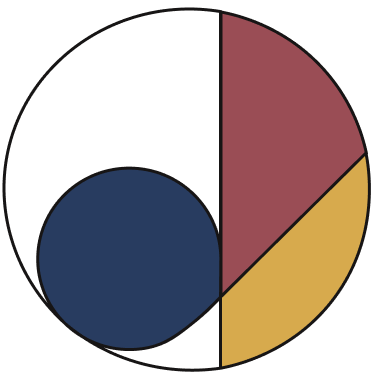Project Info
Client:
Bayer
Bayer
Timeline:
2023
2023
Role:
UX Research, Data Analyst
UX Research, Data Analyst
Project Objective
The goal of this project was to uncover insights into the challenges leaders face in making people-related decisions, including workforce planning, performance management, change and culture, rewards, and talent management. Through structured interviews with people leaders, the team synthesised input, clustered recurring themes, and transformed raw feedback into clear insights presented in a comprehensive PowerPoint deck. The outcome aimed to inform improvements that enhance leaders’ experience and effectiveness in the decision-making process.
The goal of this project was to uncover insights into the challenges leaders face in making people-related decisions, including workforce planning, performance management, change and culture, rewards, and talent management. Through structured interviews with people leaders, the team synthesised input, clustered recurring themes, and transformed raw feedback into clear insights presented in a comprehensive PowerPoint deck. The outcome aimed to inform improvements that enhance leaders’ experience and effectiveness in the decision-making process.
Our User Interview Approach
As part of the discovery phase, one-on-one interviews were conducted with people leaders across multiple functions and countries to capture a diverse range of perspectives. These sessions were held online and structured by topic sections, allowing the interviewer to guide leaders through key areas of the people decision-making process.
Certain sections required interviewees to share their screens and walk through existing systems, such as the manager dashboard, in order to provide a firsthand view of their interactions and challenges. This step was crucial in assessing usability, pain points, and overall experience. Toward the end of each session, interviewees were also shown early mockups of in-progress solutions, such as the Talent Cockpit, to gather feedback and validate design directions.
This interview method ensured not only a comprehensive understanding of current pain points but also active involvement of leaders in shaping potential solutions.
Certain sections required interviewees to share their screens and walk through existing systems, such as the manager dashboard, in order to provide a firsthand view of their interactions and challenges. This step was crucial in assessing usability, pain points, and overall experience. Toward the end of each session, interviewees were also shown early mockups of in-progress solutions, such as the Talent Cockpit, to gather feedback and validate design directions.
This interview method ensured not only a comprehensive understanding of current pain points but also active involvement of leaders in shaping potential solutions.
Clustering and Data Collation
Following the interviews, the raw data was transferred into Mural, where each response was represented as a digital post-it. This allowed the team to visualise feedback at scale and begin grouping similar responses together. By clustering into common themes, we were able to identify recurring challenges and patterns that spanned across both functions and countries.
To ensure accuracy, we complemented the clustering process with data collation in Excel. This step was particularly important as many responses touched on multiple topics at once—for example, a single comment could simultaneously highlight issues related to Restructuring and Organisational Structure. By applying a customised counting method, we ensured that each theme was properly captured and represented in the overall analysis.
This approach provided both a qualitative and quantitative lens—surfacing not only what leaders were saying but also how frequently and consistently those themes appeared across the organization.
Please note the Mural photo is just to show an example, not an actual representation of our Mural board during the project.
Presentation Deck
Once the data was clustered and quantified, the next step was to translate the findings into a presentation deck for stakeholders. The challenge was to strike a balance between clarity, aesthetics, and accuracy—creating slides that were visually engaging without losing the integrity of the data.
The deck was structured around the sections of the interview questions, ensuring a logical flow for the audience. Within each section, we surfaced selected raw quotes from people leaders to bring authenticity and context to the data, allowing stakeholders to hear the “voice of the leader” alongside the aggregated insights. In some cases, multiple interview questions were combined into a single slide, especially when the responses overlapped or addressed interconnected themes. This helped to reduce redundancy while still capturing the richness of the feedback.
Through careful design and content curation, the presentation provided a clear narrative that highlighted key insights, reinforced with both data and direct leader perspectives—making the findings more impactful and actionable.
Defining Scope and Priorities
After consolidating the interview insights and data, the next step was to determine the scope of improvements within the platforms used by people leaders. By mapping the challenges uncovered, we were able to clearly identify which issues fell within scope and which were outside immediate consideration.
Each challenge was then categorised based on the nature of its solution—whether communication-related, process-driven, or tied to systems and tools. This structured classification not only clarified the type of intervention required but also allowed us to align challenges with the appropriate internal stakeholders responsible for driving solutions.
This approach created efficiency on multiple levels: for us as designers, it provided a clear framework to guide solutioning; for Bayer’s HR team, it enabled better delegation, resource alignment, and a transparent pipeline of what improvements could be rolled out to employees. Ultimately, this step bridged insights to action, ensuring that data translated into concrete next steps.
